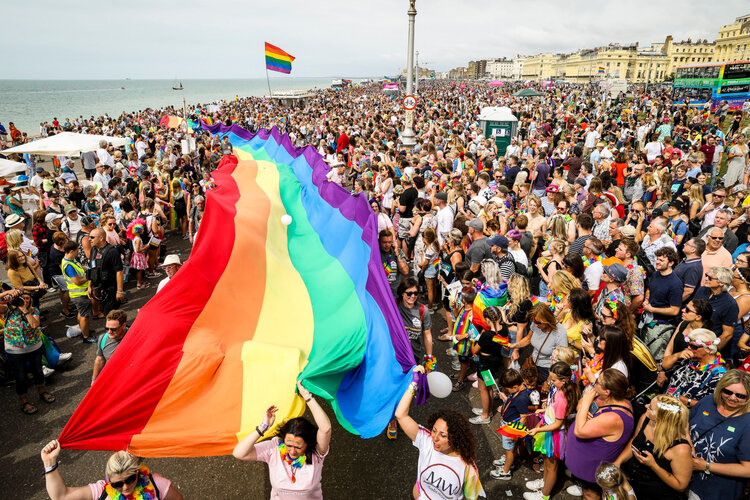First celebrated in 2005, February is UK LGBTQ+ History Month.
During this month, we celebrate the inspiring diversity of the LGBT+ community and continue to raise awareness of the issues and prejudice that are still sadly prominent in the lives of many LGBTQ+ people across the world today.
There are many towns and cities in the UK that proudly fly the Pride flag all year round, and this is especially the case during February. You may be familiar with the Pride rainbow flag with its six bright and colourful stripes, but do you know where the flag originated?

In 1970s America, a man called Gilbert Baker was encouraged by rising activist, Harvey Milk, to create a recognisable symbol that could be used to positively represent the entire LGBTQ+ community. Baker took to a prominent music venue in San Francisco, the Winterland Ballroom, for some much-needed inspiration. Baker described the huge amounts of diversity in the crowd here as “like a rainbow” – and so, the idea for a rainbow flag was born:
”“The crowd was as much a part of the show as the band. Everyone was there: North Beach beatniks and barrio zoots, the bored bikers in black leather, teenagers in the back row kissing. There were long-haired, lithe girls in belly-dance get-ups, pink-haired punks safety-pinned together, hippie suburbanites, movie stars so beautiful they left you dumbstruck, muscle gayboys with perfect mustaches, butch dykes in blue jeans, and fairies of all genders in thrift-store dresses … We were all in a swirl of color and light. It was like a rainbow.”
The rainbow emblem represents more than just a rainbow, however, with the original flag actually containing eight colours rather than six, and with each colour being attributed an aspect of LGBTQ+ identity and culture:
- Hot pink was used to represent Sexuality.
- Red is for the passion of Life.
- Orange is to represent inner Healing.
- Yellow stands for Sunlight.
- Green reflects that of Nature.
- Turquoise symbolised Magic or Art.
- Indigo for Serenity or Harmony.
- And finally, violet to embody Spirit.
Modern versions of the flag do not usually contain hot pink or turquoise anymore, but that’s nothing to do with renouncing Sexuality or Art – in fact, there are multiple reasons for the removal of colours.
Firstly, the removal of pink was due to production costs. Flag companies found it difficult to produce such a highly pigmented hot pink dye, and so this was the first alteration to Baker’s original design. The demand for the colour was not high enough to warrant the high price and so the pink was scrapped.
The reason for the turquoise stripe being removed is not fully known but a popular theory says that after the assassination of openly gay US politician and activist, Harvey Milk, many took to the streets in his honour. The colours of the Pride flag were to be split up and marched on both sides of the street, and so a stripe was removed to ensure an even number of colours on each side.
In 2018, the Pride flag was redesigned again and is the most recent version that you may have come across. You will sometimes notice the addition of a black and brown stripe, and the addition of baby pink, baby blue, and white stripes are to incorporate the Trans Pride flag into the original design. The new flag, also called the Progress flag, is designed to honour LGBTQ+ people of colour and those whose activism inspired the very first Pride marches. The Trans Pride flag has been included to represent different gender identities.

The meaning behind the Progress flag can be seen as an accurate portrayal of where the LGBTQ+ community stands at the moment. It is a community that has made – and continues to make – excellent progress. And yet, there is still much more to do.



